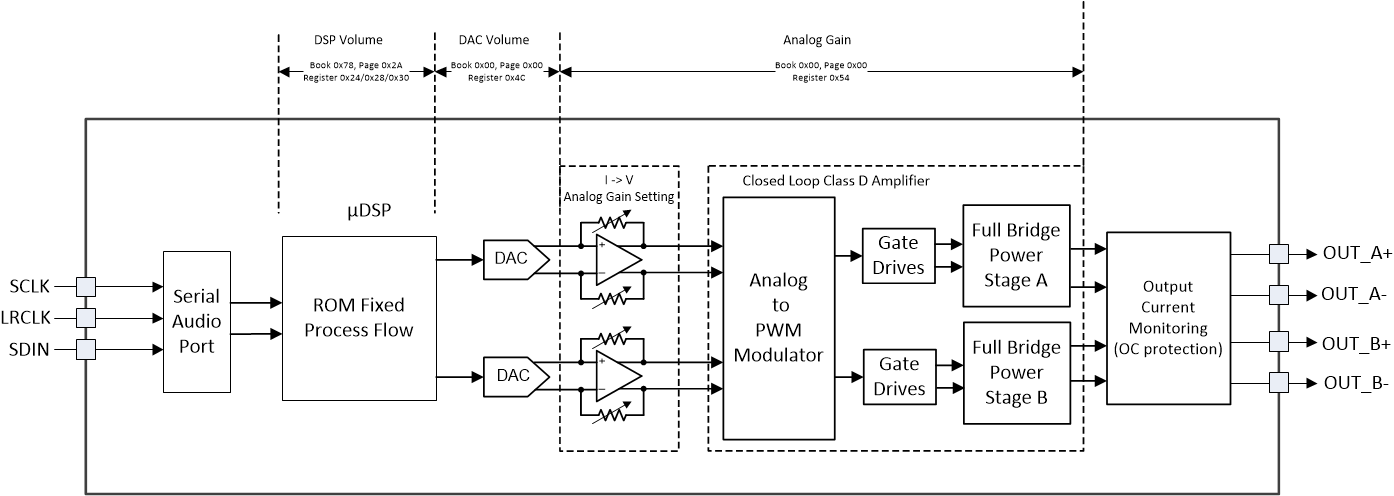SLASEX7A June 2021 – December 2021 TAS5828M
PRODUCTION DATA
- 1 Features
- 2 Applications
- 3 Description
- 4 Revision History
- 5 Pin Configuration and Functions
- 6 Specifications
- 7 Parameter Measurement Information
-
8 Detailed Description
- 8.1 Overview
- 8.2 Functional Block Diagram
- 8.3 Feature Description
- 8.4 Device Functional Modes
- 8.5 Programming and Control
- 8.6 Register Maps
- 9 Application and Implementation
- 10Power Supply Recommendations
- 11Layout
- 12Device and Documentation Support
- 13Mechanical, Packaging, and Orderable Information
Package Options
Refer to the PDF data sheet for device specific package drawings
Mechanical Data (Package|Pins)
- DAD|32
Thermal pad, mechanical data (Package|Pins)
- DAD|32
Orderable Information
8.3.8.1 Speaker Amplifier Gain Select
A combination of digital gain and analog gain is used to provide the overall gain of the speaker amplifier. As seen in Figure 8-7, the audio path of the TAS5828M consists of a digital audio input port, a digital audio path, a digital to PWM converter (DPC), a gate driver stage, a Class D power stage, and a feedback loop which feeds the output information back into the DPC block to correct for distortion sensed on the output pins. The total amplifier gain is comprised of digital gain, shown in the digital audio path and the analog gain from the input of the analog modulator to the output of the speaker amplifier power stage.
 Figure 8-7 Speaker Amplifier Gain
Figure 8-7 Speaker Amplifier GainAs shown in Figure 8-7, the first gain stage for the speaker amplifier is present in the digital audio path. It consists of the volume control and the digital boost block. The volume control is set to 0 dB by default, it does not change. For all settings of the register 0x54, AGAIN[4:0], the digital boost block remains at 0 dB. These gain settings ensure that the output signal is not clipping at different PVDD levels. 0dBFS output is 29.5-V peak output voltage
| AGAIN <4:0> | GAIN (dBFS) | AMPLIFIER OUTPUT PEAK VOLTAGE (VP/FS) | AMPLIFIER OUTPUT PEAK VOLTAGE (dBVP/FS) |
|---|---|---|---|
| 00000 | 0 | 29.5 | 29.4 |
| 00001 | -0.5 | 27.85 | 28.9 |
| 00010 | -1.0 | 26.29 | 28.4 |
| 00011 | -1.5 | 24.82 | 27.9 |
| ……. | …….. | ……. | ……. |
| 11111 | -15.5 | 4.95 | 13.9 |